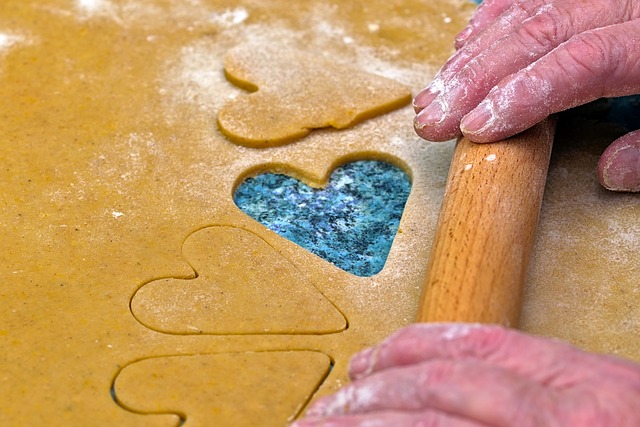Contrast therapy, an ancient practice of alternating hot and cold treatments, effectively manages chronic joint and muscle pain associated with conditions like arthritis and fibromyalgia. Heat increases blood flow and relaxes muscles while cold reduces swelling and numbs pain signals. This holistic approach improves recovery, flexibility, and provides natural relief for athletes and individuals suffering from persistent joint pain. Starting with gentle intensities, protecting skin from direct ice contact, and using warm water for heat treatments, daily consistency of 10-15 minutes offers significant relief. Contrast therapy emerges as a game-changer for managing chronic conditions without medication side effects.
“Discover the ancient secret to alleviating joint and muscle pain with contrast therapy—a powerful treatment involving alternating hot and cold applications. This holistic approach has gained prominence in managing chronic conditions, offering a natural way to reduce inflammation and stimulate circulation.
In this comprehensive guide, we’ll explore the science behind contrast therapy, its numerous benefits, practical implementation tips, and inspiring success stories of individuals who’ve found relief through this ancient yet modern practice.”
Understanding Contrast Therapy: Unlocking the Power of Hot and Cold
Contrast therapy, involving alternating hot and cold treatments, is a powerful tool for managing joint and muscle pain, especially in those suffering from chronic conditions. This age-old practice harnesses the body’s natural response to temperature changes, promoting blood flow and aiding in healing. When you apply heat, your blood vessels dilate, increasing blood circulation to the affected area, which can help reduce inflammation and relax muscles. On the other hand, cold therapy constricts blood vessels, reducing swelling and numbing pain signals, providing a soothing effect.
By incorporating both hot and cold treatments into a routine, individuals can unlock the benefits of enhanced recovery, reduced muscle stiffness, and improved flexibility. This method is particularly beneficial for athletes looking to speed up recovery after intense workouts or for chronic condition sufferers seeking natural relief from persistent joint pain. Contrast therapy offers a holistic approach, allowing the body to heal and rejuvenate through simple yet effective means.
Benefits for Chronic Joint and Muscle Pain: A Comprehensive Look
Chronic joint and muscle pain can significantly impact a person’s quality of life, but contrast therapy offers a promising solution. This ancient practice involves alternating between hot and cold treatments, providing a comprehensive approach to managing discomfort. By stimulating blood flow and promoting healing, contrast therapy helps reduce inflammation, alleviate tension, and improve overall mobility.
For individuals suffering from chronic conditions like arthritis or fibromyalgia, this method can be a game-changer. The heat expands blood vessels, increasing circulation and releasing endorphins, natural painkillers produced by the body. In contrast, cold temperatures constrict blood vessels, reducing inflammation and numbing the affected area, offering much-needed relief. This unique combination of effects makes contrast therapy an effective tool for managing persistent joint and muscle pain, potentially providing long-lasting comfort and improved function.
Implementing Hot and Cold Treatments: Tips and Best Practices
Implementing hot and cold treatments is a simple yet powerful way to manage joint and muscle pain, especially when dealing with chronic conditions. This contrast therapy involves alternating between heat and ice packs to stimulate blood flow, reduce inflammation, and provide deep relaxation. For best results, apply heat for 15-20 minutes to relax tight muscles and increase circulation before transitioning to cold for 10-15 minutes to constrict blood vessels and reduce swelling.
When incorporating contrast therapy into your routine, ensure you listen to your body. Start with lower intensities and gradually increase heat or cold as tolerance allows. Avoid using ice directly on the skin; always wrap it in a thin towel to prevent damage. For hot treatments, opt for warm, not scalding, water. Consistency is key; perform this routine daily for at least 10-15 minutes to experience significant relief from chronic joint and muscle discomfort.
Real-Life Success Stories: Transforming Lives with Contrast Therapy
In today’s world, where chronic conditions like arthritis and muscle soreness are prevalent, people are constantly seeking effective yet natural solutions. Contrast therapy, a time-honored practice involving alternating between hot and cold, has emerged as a game-changer for many. Real-life success stories abound, with individuals attesting to the transformative power of this ancient technique. For instance, long-suffering arthritis patients have reported significant relief from inflammation and stiffness after incorporating contrast therapy into their routines.
These success stories span various demographics, proving that contrast therapy is adaptable and accessible. Whether it’s a professional athlete recovering from intense training or an elderly individual seeking to ease joint pain, contrast therapy has shown promise in managing chronic conditions. By stimulating blood circulation and promoting metabolic processes, this simple yet powerful method offers natural relief without the side effects often associated with conventional medications.
Contrast therapy, through its hot and cold treatments, offers a natural and effective approach to managing chronic joint and muscle pain. By understanding the science behind this method and implementing best practices, individuals can experience significant relief and improved quality of life. The success stories shared highlight the transformative potential of contrast therapy for those suffering from various chronic conditions. Incorporating this technique into daily routines could be a game-changer in the journey towards lasting pain management.
